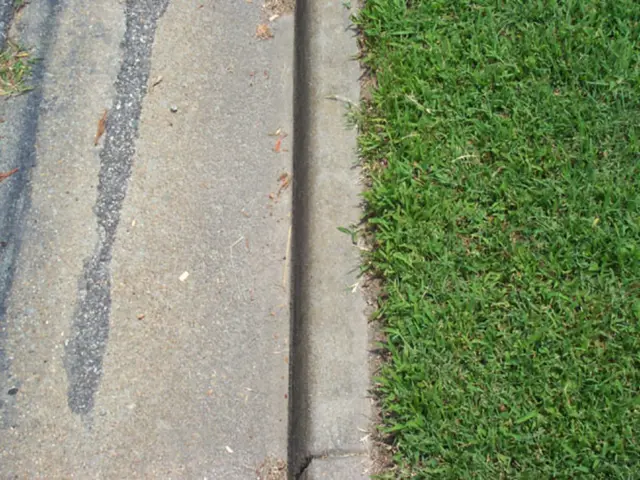Distinguishing Age Spots from Skin Cancer: A Guide to Recognition
Laying It All Out: Age Spots versus Skin Cancer
As we age, our skin might start to show some change in the form of harmless marks known as age spots. These spots can sometimes resemble skin cancer, causing alarm. However, understanding the key differences between the two can help you distinguish one from the other. This article will discuss the differences, symptoms, diagnosis, and treatments for both conditions.
Suspecting Skin Irregularities: Age Spots vs Skin Cancer
Age spots and skin cancer may seem similar, but they have distinct characteristics. Here's a breakdown:
Appearance
- Age Spots: Also called sunspots or solar lentigines, these harmless lesions appear on sun-exposed areas like the face, hands, and arms. They're usually uniform in color with clearly defined borders [1][3].
- Skin Cancer: The look of skin cancer depends on the type. Examples include:
- Basal Cell Carcinoma: This type often appears as a small, pearly bump with red, pink, blue, black, or brown areas and raised edges with a lower center [2].
- Squamous Cell Carcinoma: This typically presents as a red or darkened patch with scaly skin, raised lumps, or open sores that don't heal [2].
- Melanoma: Irregular shape, uneven border, and varying colors are common characteristics, following the ABCDE rule (Asymmetrical, Border, Color, Diameter, Elevation) [1][3].
Symptoms
- Age Spots: Generally, they cause no harm apart from discoloration.
- Skin Cancer: Symptoms could include itching, bleeding, crusting over, and sores that don't heal [2]. Melanoma might show signs of elevation or changes in size and color [3].
Diagnosis
- Age Spots: Typically diagnosed by visual inspection, but if you notice irregular features like varying colors or irregular borders, further evaluation may be necessary [1][3].
- Skin Cancer: Diagnosis involves a combination of clinical examination, biopsy, and sometimes imaging studies [2]. Early detection is crucial for effective treatment.
Treatment
- Age Spots: Treatment isn't always required unless you wish to improve their appearance. Options include laser therapy, chemical peels, or topical creams [4].
- Skin Cancer: Treatment varies based on the type and stage:
- Basal Cell Carcinoma and Squamous Cell Carcinoma: Treatment options could include surgical excision, topical treatments, or radiation therapy [2].
- Melanoma: Potential treatments include surgery, immunotherapy, targeted therapy, or chemotherapy [2].
In essence, while age spots are generally harmless and cosmetic, skin cancers require immediate medical attention due to their potential for serious health consequences. Keep a close eye on any changes in your skin and seek medical advice when needed. Early detection can make a significant difference in treatment outcomes.
- Seniors may develop age spots, which usually appear as uniform, colored marks on sun-exposed areas like the face, hands, and arms.
- Skin cancers, such as basal cell carcinoma and squamous cell carcinoma, can present as small bumps with distinct colors and raised edges, while melanoma often exhibits irregular shape, uneven borders, and varying colors.
- Unlike age spots, whose main symptom is discoloration, skin cancers can display itching, bleeding, crusting over, and sores that don't heal.
- Both age spots and skin cancers can be diagnosed through visual inspection; however, if age spots show irregularities, evaluation may be necessary. Skin cancer diagnosis typically involves a combination of clinical examination, biopsy, and imaging studies.
- Age spots might not require treatment; options for improving their appearance include laser therapy, chemical peels, or topical creams.
- Skin cancer treatment depends on the type and stage, with potential options including surgical excision, topical treatments, radiation therapy, immunotherapy, targeted therapy, or chemotherapy.
- Paying attention to changes in your skin, particularly in the realm of health and wellness, is essential, as early detection can have a significant impact on treatment outcomes for skin cancer.
- Recognizing the differences between age spots and other skin cancers through dermatology, science, and medical-condition knowledge allows us to take appropriate actions when it comes to our skin care and skin-related medical conditions.








